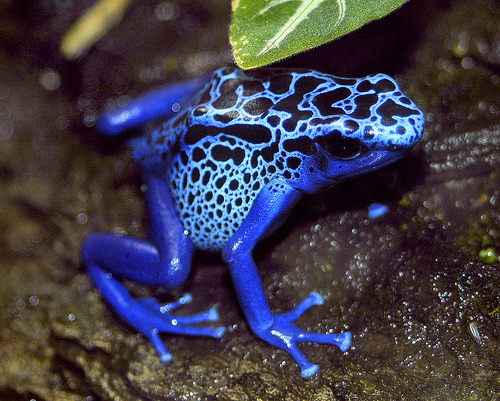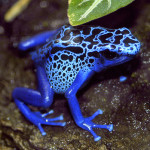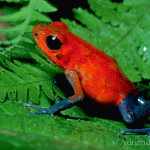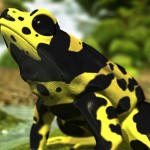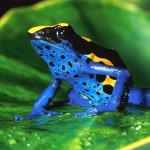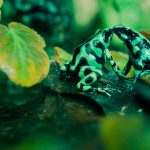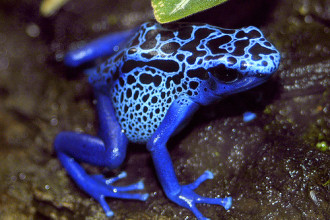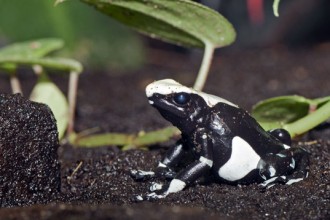5 Poison Arrow Frog Rainforest Animals
Sponsored link:
As the name (from Greek, amphibios, indicating 'having a double life') implies, the amphibia are adapted to move, feed and breathe equally well on land or in fresh water though, in most cases, they breed only in water. All amphibia are vertebrates, that is, they have a vertebral column and a skull; they also have four limbs. They are commonly referred to as 'cold-blooded' but this indicates that their temperature varies with that of the air or water. A frog in warm water would have likewise warm blood.
In Britain there are seven species of amphibians under the headings of frogs, toads and newts. In continental Europe and elsewhere there are also salamanders.
Frogs and toads have no tails and their hind legs are much larger than their front legs. This is an adaptation to leaping and swimming. Newts have tails and their limbs are equal in size. They swim by wriggling their bodies like a fish with the limbs relaxed and trailing. On land they use their limbs to walk or crawl. Frogs, by extending their long hind legs can progress on land by leaping, but they may also crawl. In water the hind legs thrust backwards against the water, so pushing the frog forward. The webbed toes supply a boosted surface for pushing against the water.
Mature amphibians are carnivorous, eating worms, slugs, beetles flies and other insects. Frogs and toads have a long sticky tongue, joined to the front of the lower jaw. It can be flicked out rapidly to pick insects off leaves or even in flight.
Amphibians related to 5 Poison Arrow Frog Rainforest Animals breathe through their skin all the time, whether they are on land or in water. The skin is richly supplied with blood capillaries. Oxygen from the air or dissolved in water diffuses through the skin and into the blood, to be carried to all parts of the body. Frogs and newts have smooth slimy skins. Toads' skin is warty and comparatively dry. Furthermore, the amphibians have lungs which come into use when the demand for oxygen is higher than normal, e.g. after activity. Amphibians have no ribs or diaphragm. Air is pumped through the nostrils and into the lungs by movements of the mouth floor. Gaseous exchange also takes place through the lining of the really large mouth cavity.
Frogs, toads and newts spend the summer months on land, mostly in damp vegetation where evaporation of water from their skin is at a minimum. In wintertime they 'hibernate' either in holes in the ground or in the mud at the bottom of ponds but in spring they migrate to a freshwater pond or lake to lay their eggs. Fertilisation is external but, in frogs and toads, there is a behaviour pattern that makes sure that sperm is shed presently of egg laying. In the water, the males place on the backs of the girls gripping them firmly under their front legs with special pads on their thumbs. The males may be carried about for days in this fashion but as soon as the eggs begin to be laid, the male releases sperm which fertilises them.
Feel free to download the Pictures under 5 Poison Arrow Frog Rainforest Animals content for free. Suport us by sharing this Pictures to your friends.
500 x 401 330 x 220 500 x 401 150 x 150
Download HereSponsored link:
